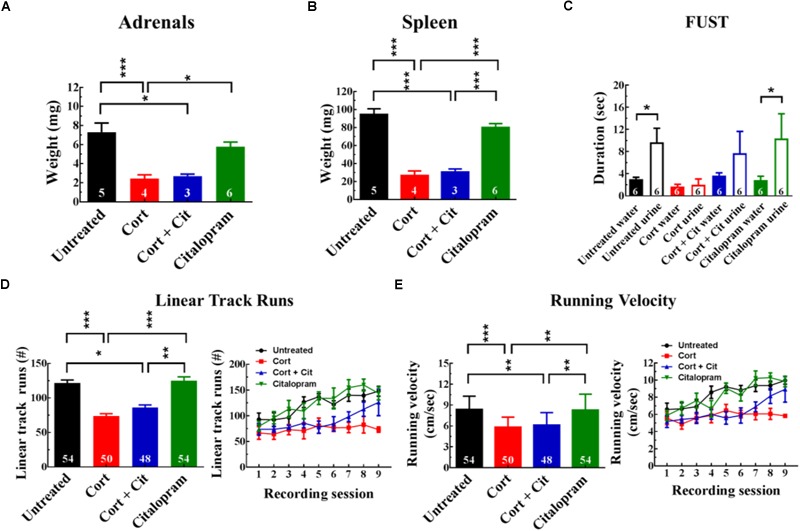FIGURE 2.

Cortisol treatment induced stress-like changes in physiology and behavior. (A,B) Organs were harvested and weighed after 8 weeks of drug treatment. Cortisol-treated mice and cortisol + citalopram-treated mice had significantly reduced adrenal (sum of left and right adrenals) and spleen weights compared to untreated and citalopram-treated mice. Numbers in bars on the graphs indicate the number of animals used. Note that adrenals and spleens were not harvested from all mice. (C) Female urine sniffing test administered to mice following chronic drug treatment. Untreated and citalopram-treated mice exhibited urine sniffing preferences. Chronic cortisol treatment eliminated this preference, which was not rescued by citalopram co-administration. (D) Linear track runs averaged over all recording sessions (left). Cortisol-treated mice and cortisol + citalopram-treated mice had significantly fewer linear track runs compared to untreated and citalopram-treated mice. Daily linear track runs plotted over time (right). A total of six mice per treatment group, with nine recording sessions per mouse, for a maximal N of 54 were used. (E) Average velocity during linear track running (left) and running velocity plotted over time for individual recording sessions (right). Cortisol-treated mice showed significantly reduced running velocity compared to untreated mice, an effect that was not reversed with citalopram co-administration. Cort, cortisol; Cit, citalopram. Asterisks show group comparisons with ∗p < 0.05, ∗∗p < 0.01, and ∗∗∗p < 0.005.
